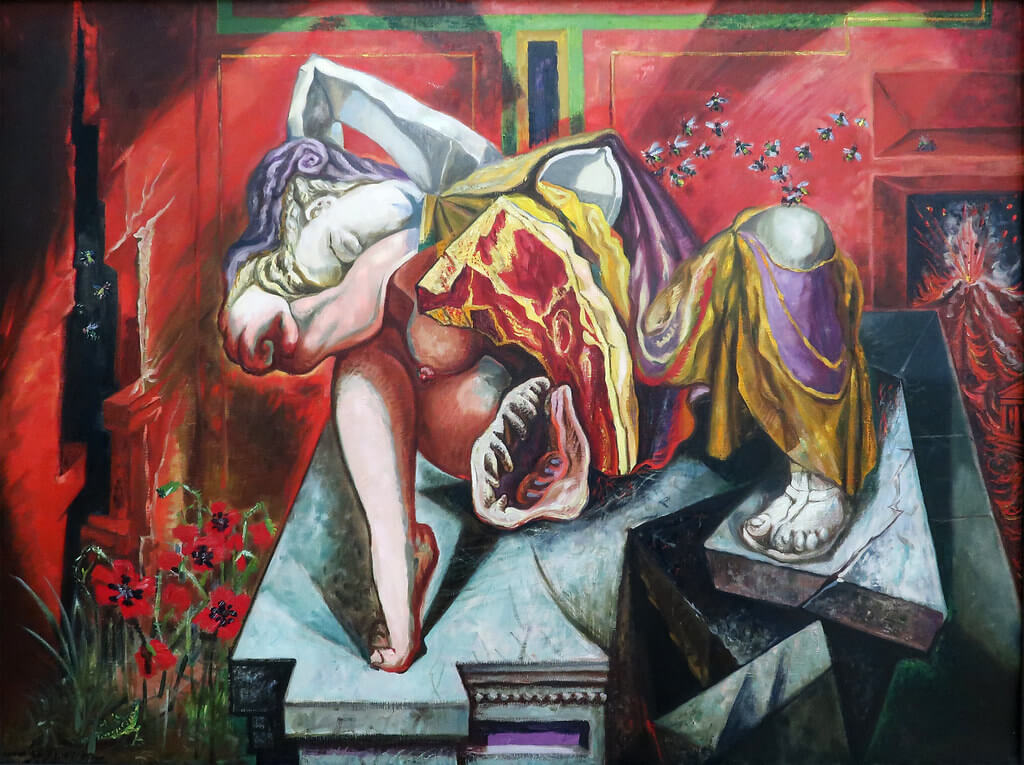The surrealist art movement has known many artists, and their techniques and ideology are still visible in contemporary art. Below are 14 examples of well-known and unknown artists that are characteristic of surrealistic art.
These are 14 examples of surrealistic art by different artists:
1. Yves Tanguy – Slow Day

This self-taught painter became fascinated by the paintings of Giorgio di Chirico and used this surrealist approach in what he later became known for. He enjoyed creating dreamy landscapes with organic objects, often devoid of clear identity, inviting subjective interpretation.
Tanguy achieved a delicate balance between abstract forms and meticulous details, creating paintings that became an intriguing combination of surrealism and precision.
Did Surrealistic Artists use drugs?
For some surrealist artists, it is known that they used drugs or other substances to connect more deeply with their subconscious, which is the essence of this art movement—exploring beyond realistic perspectives and combinations to depict a dream world or an absurd reality.
Disclaimer: There are many assumptions, but few reports about the use of drugs among artists from these periods. Through the exploration of the subconscious, it is plausible that this was the case for some artists.
The experimentation with narcotics emerged decades after the establishment of the surrealistic art movement. By then, abstract art forms like cubism were already gaining popularity.
2. Salvador Dali: Soft Construction with Boiled Beans, 1936
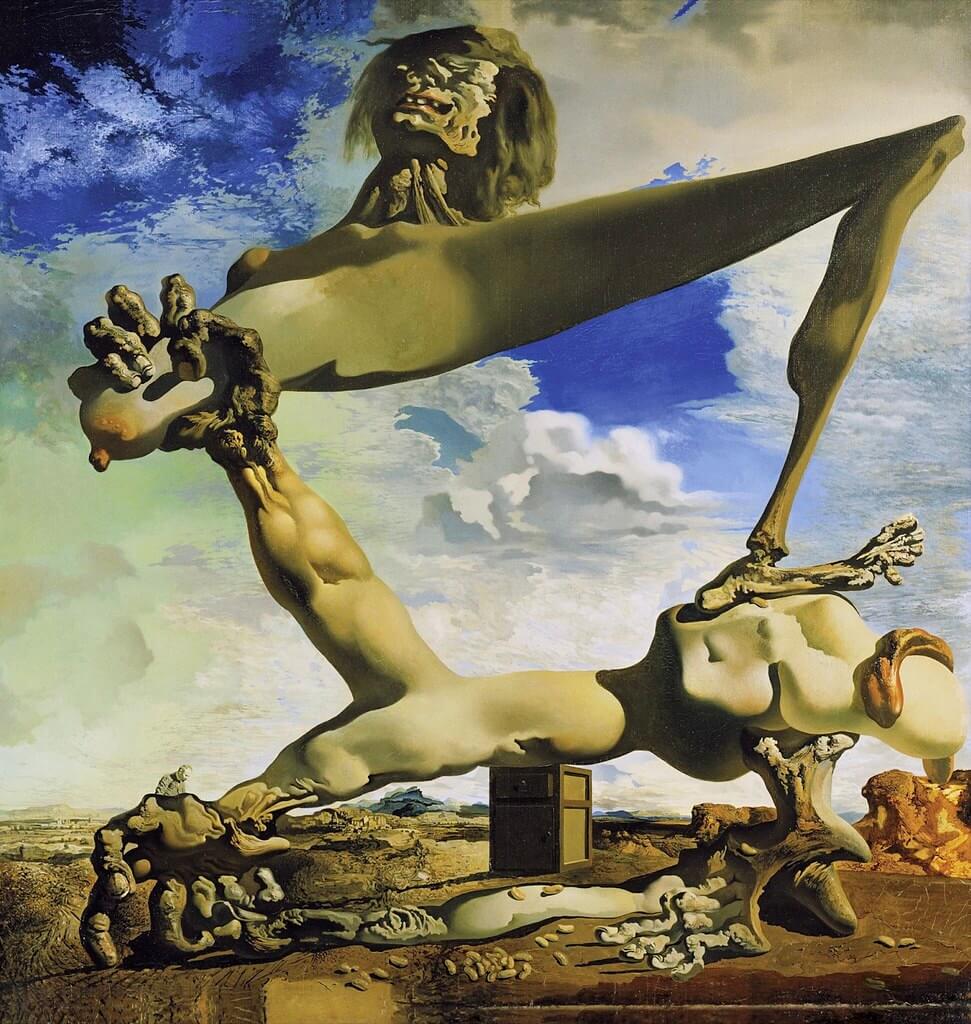
The painting features a monstrous figure with a distorted face and limbs, and the use of symbolism is linked to the political and social unrest in Spain during that period.
3. René Magritte, Le Double Secret, 1927
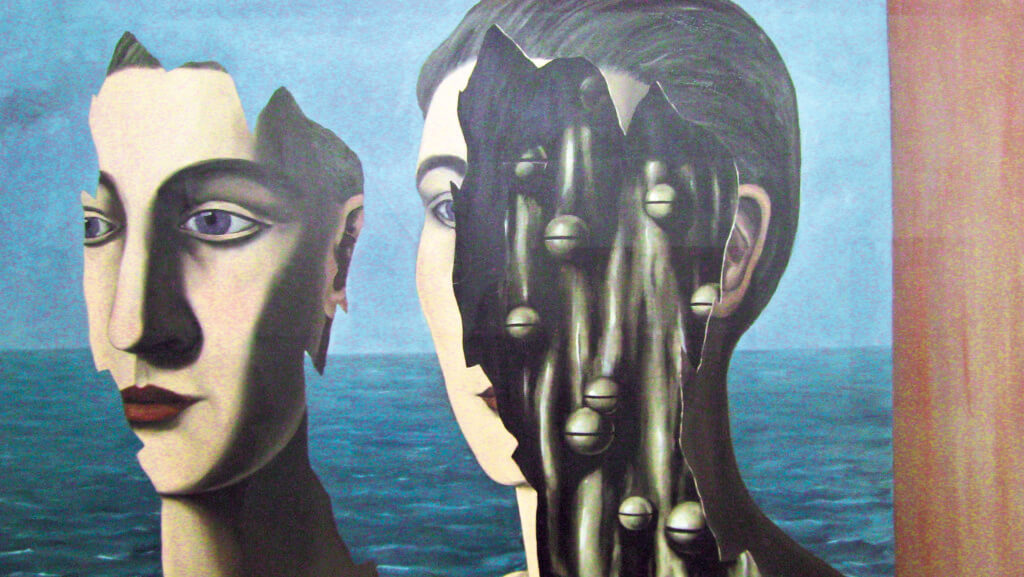
In this painting, René Magritte aimed to avoid smaller aesthetic details and focus more on his own thoughts. The painting reveals what goes on inside someone’s mind, which society often seeks to conceal with rules and good manners. The face shows the inside of the head, with various bells hanging, symbolizing folly and debauchery.
4. Max Ernst: Woman, Old Man, and Flower (1923–4)
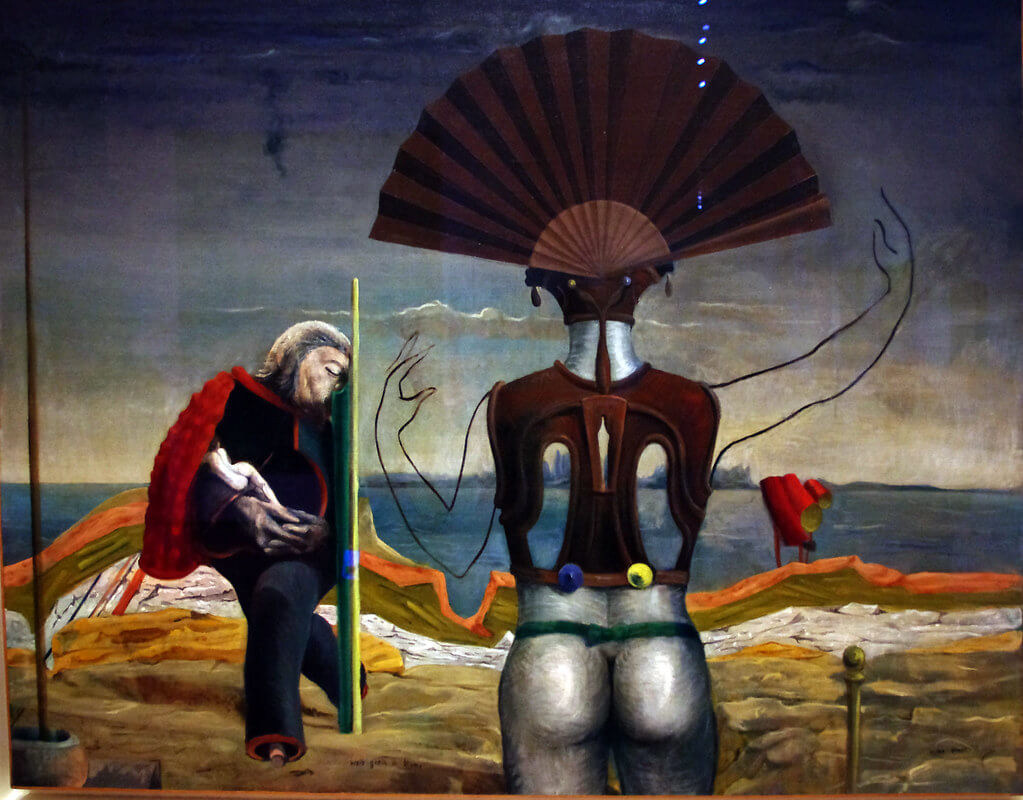
This painting is typical of the surrealist movement due to the contradictory elements that are recognizable but seem randomly assembled. The color palettes for Max Ernst always had to evoke a sense of irrationality and dreaminess.
Much of his later work was not purely surrealist but also had influences from Cubism and more abstract modern art.
Dreams and the Unconscious
The subconscious was perhaps the greatest driving force of the Surrealist artist. The focus on dreams and absurd situations and forms stemmed from the assumption that all suppressed desires and impulses were hidden in the subconscious.
This inspiration primarily arose from the psychoanalytic theories of Sigmund Freud, who wrote extensively about the subconscious and gained fame for it.
This also adds mystery to the creative process because the artist seeks images or visions from the subconscious, such as dreams.
5. Leonora Carrington: Self-Portrait (Inn of the Dawn Horse)
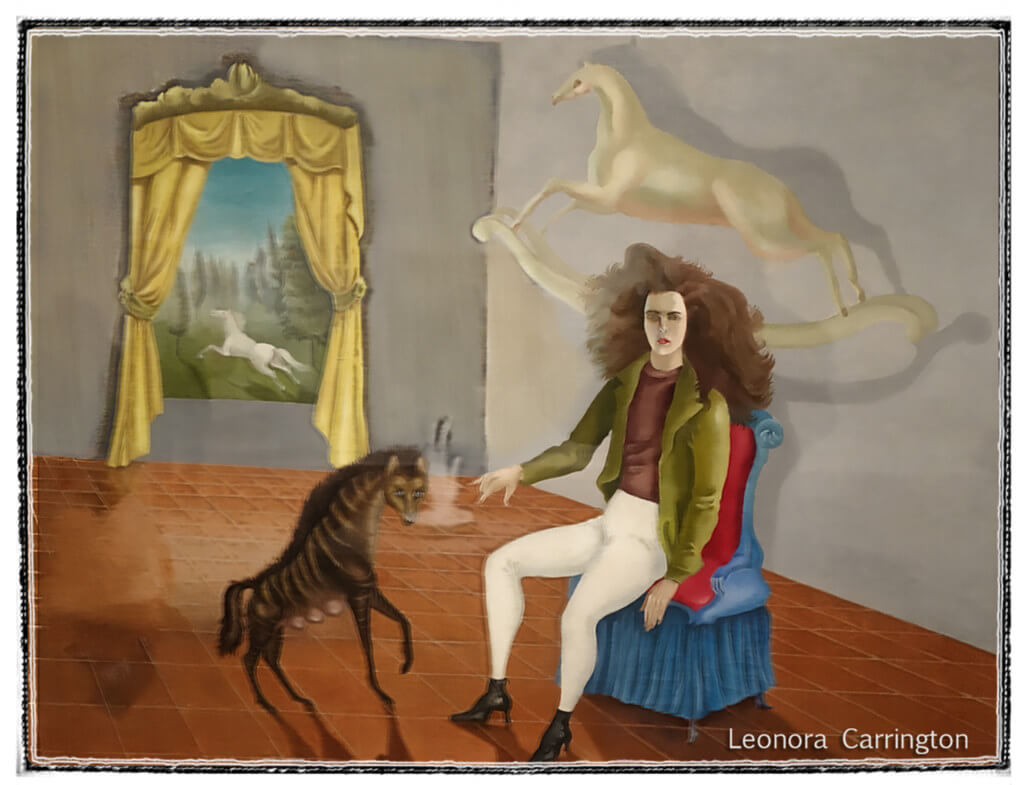
The symbolism in this painting effectively presents Carrington’s dreams. She was deeply fascinated by Celtic mythological creatures and the stories associated with them. She often compared herself to hyenas and horses, elements she liked to incorporate into her art.
6. Andre Masson: Gradiva
This magnificent piece of art painted by Andre Masson represents a human figure that is both dead and alive. He had a great obsession with death, partly influenced by World War I and its aftermath. Additionally, the flies on the right suggest death and suffering. This symbolism of different objects is a strong characteristic of surrealist ideology.
7. Dorothea Tanning: Eine Kleine Nachtmusik
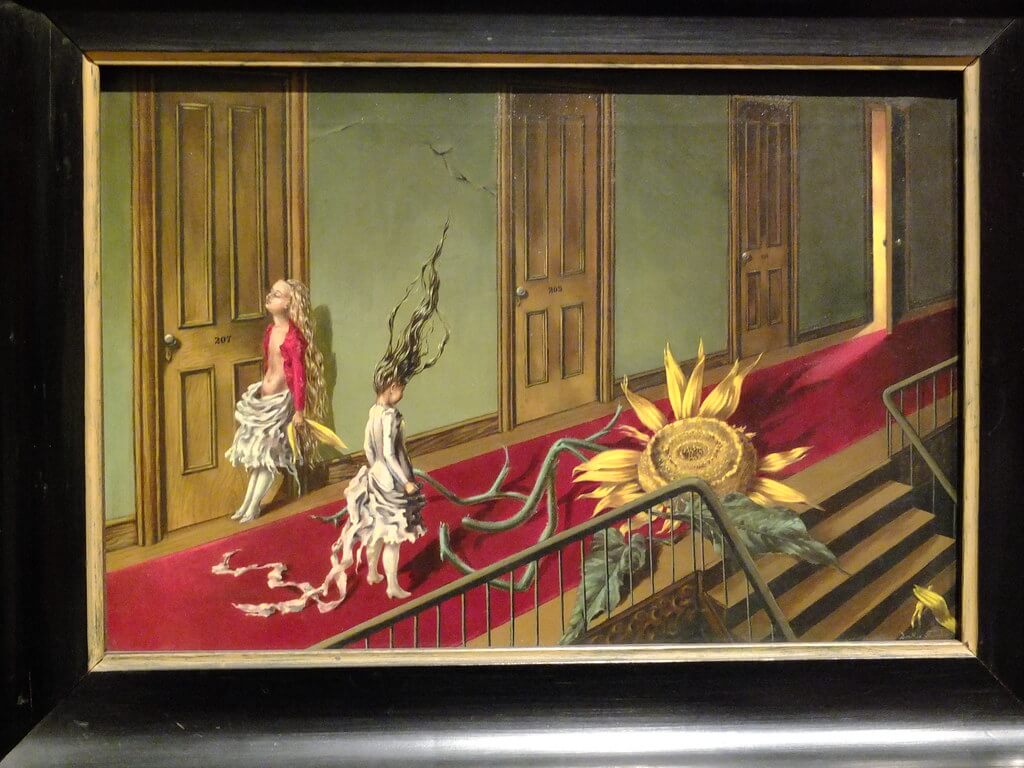
“Eine Kleine Nachtmusik” is considered one of Tanning’s remarkable paintings. It is named after one of Mozart’s serenades that involves supernatural forces, which largely inspired her to create this artwork. The large sunflower symbolizes the confrontations and challenges of youth. The torn clothing of the two children also indicates a previous conflict. Tanning’s art is entirely based on her personal experiences and thoughts, leaving much for the viewer to interpret.
The Rule of Automatism
The creative process of an artist often begins with an idea or a preconceived plan. Not always, of course, and especially for the surrealistic artist, it was important to let the subconscious do its work. This meant relinquishing conscious control over the creative process, allowing everything to arise spontaneously. This is now also known as psychic automatism.
8. Paul Delvaux: The Road to Rome
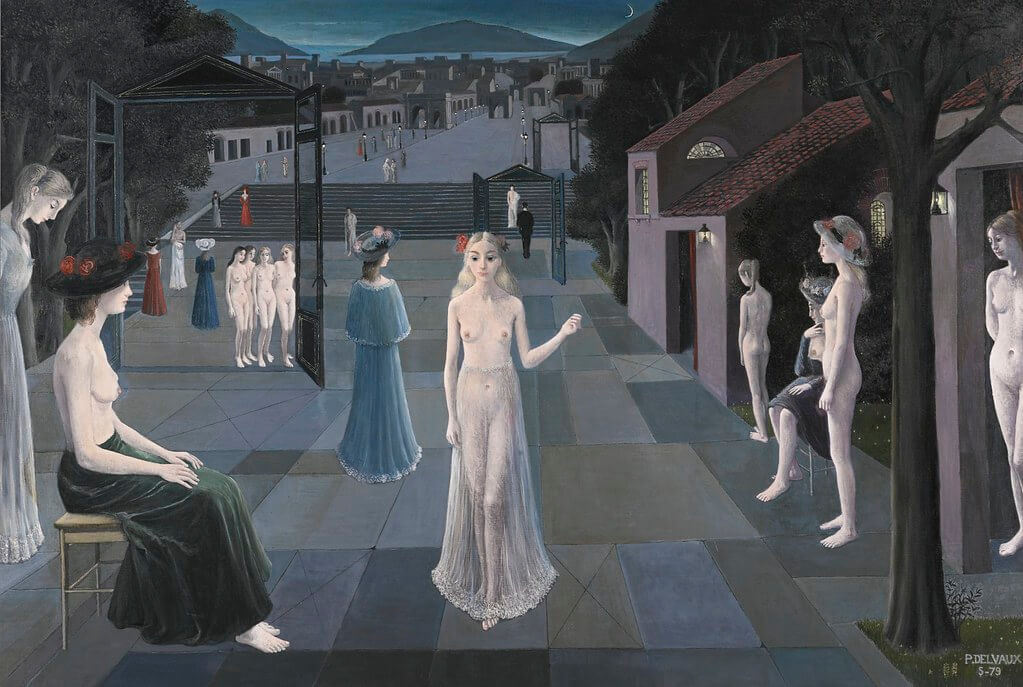
“The Road to Rome” by Paul Delvaux is a painting that embodies the surrealist style of the artist. It depicts a nocturnal scene with an abandoned railway station, surrounded by a mysterious atmosphere. Naked female figures wander around on the platform while trains disappear in the distance. Delvaux combines realistic details with dreamlike elements, such as unnatural lighting and the almost hallucinogenic presence of the naked figures.
The composition raises questions about time, space, and the human psyche, offering the viewer an inviting yet somewhat alienating journey into the artist’s imagination.
9. Toyen: Asleep, 1937
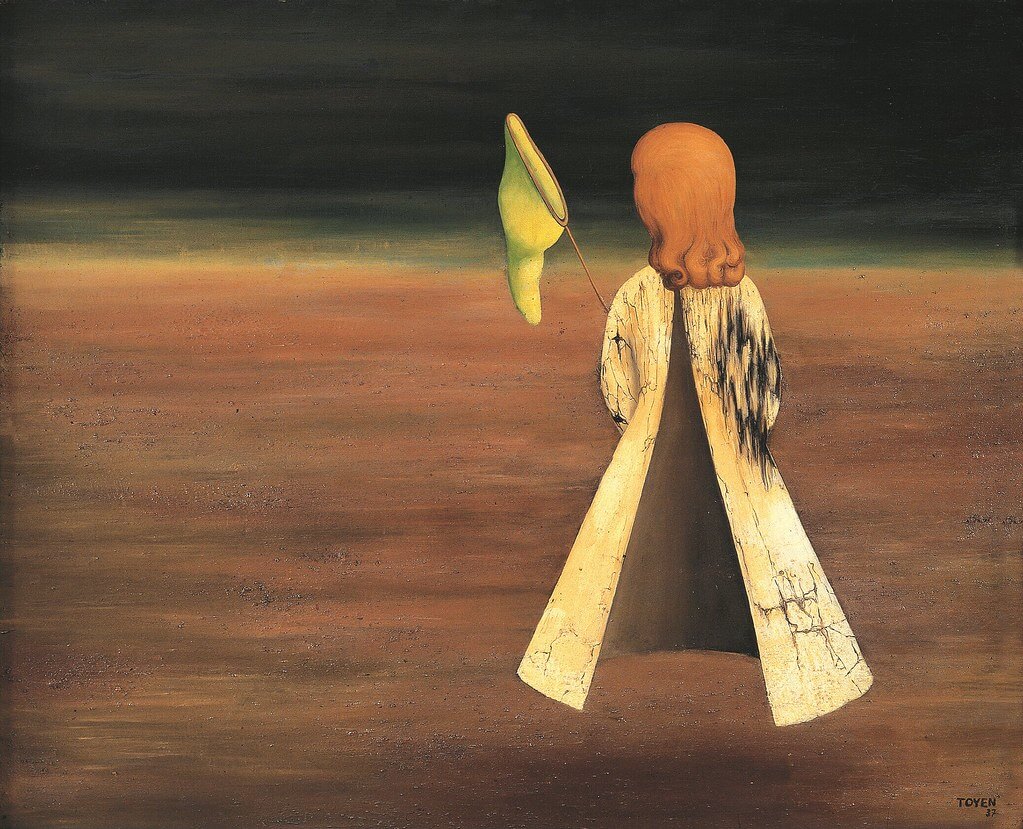
In this painting, there is a dreamlike girl floating in an abandoned atmosphere. The body is clearly absent and may signify something she wants to capture with her net.
Toyen envelops the scene with a sense of mystery and symbolism, inviting contemplation of dreams and the depths of the subconscious. The work exudes a certain intimacy, inviting the viewer to explore the boundaries between reality and imagination.
10. Kay Sage: The Third Sleep
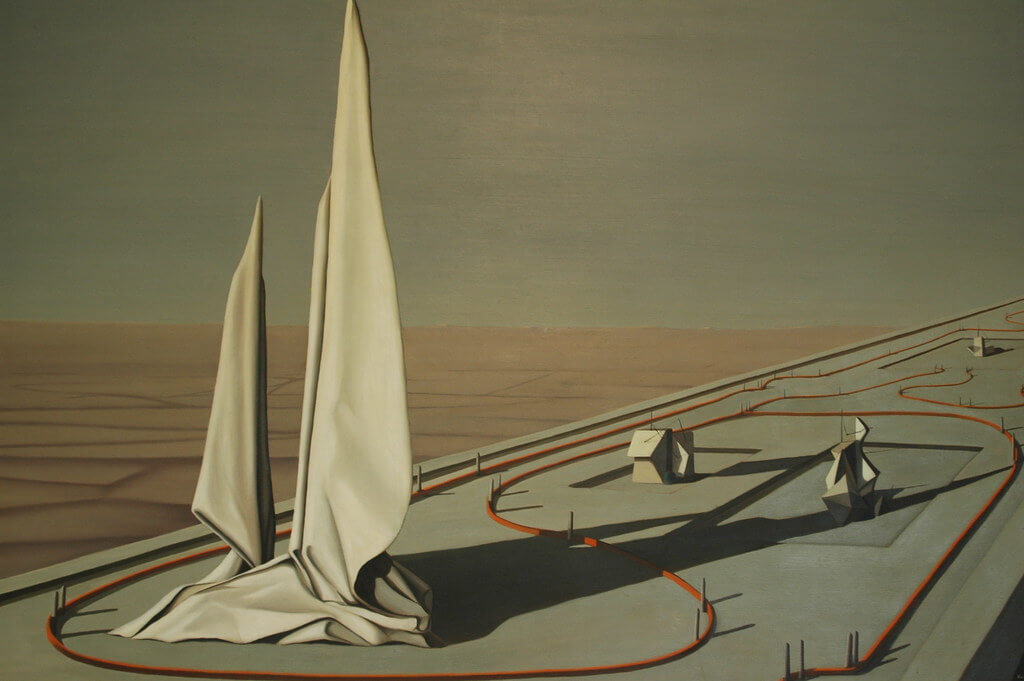
“The Third Sleep” by Kay Sage embodies surrealism with an enigmatic force. An abandoned landscape is dominated by a central structure, suggesting timelessness and mystery. The muted colors contribute to the atmosphere of surrealist melancholy, while the floating elements evoke a sense of disorientation and wonder.
11. Kay Sage: I have No Shadow
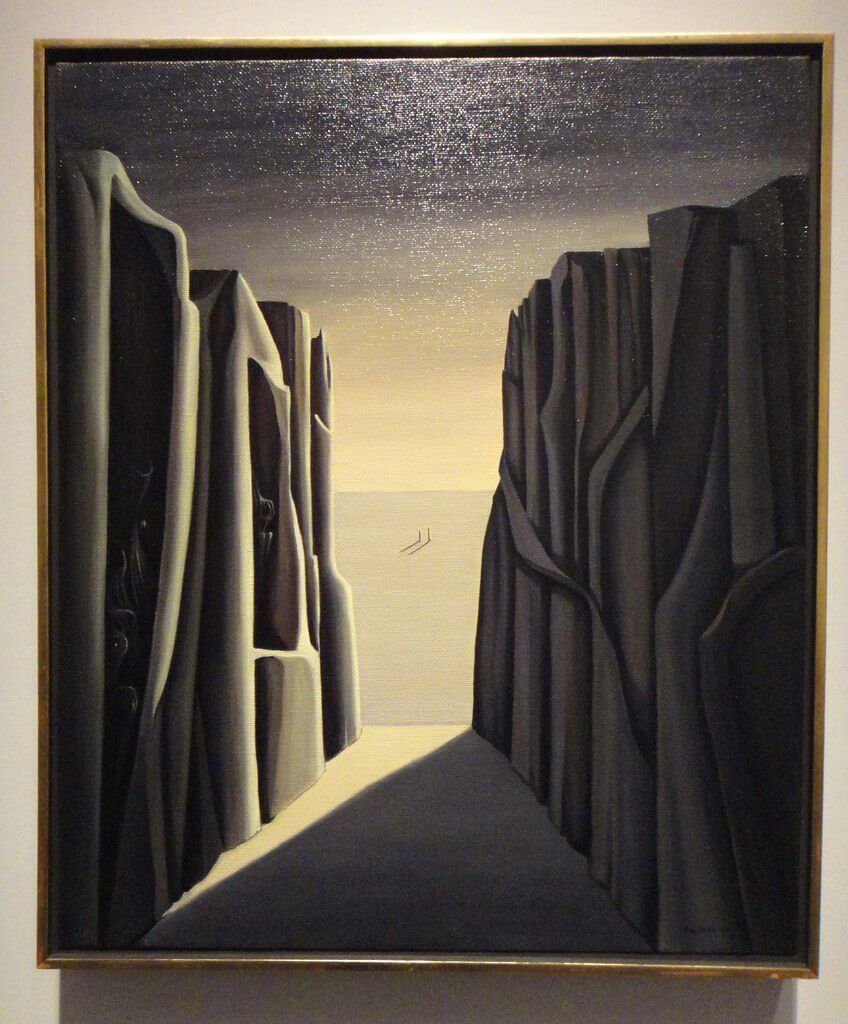
In this artwork, Kay intentionally worked with depth, allowing the viewer to look out onto a vast plain from a path surrounded by rocky walls. She was greatly influenced by Giorgio de Chirico, a prominent surrealist painter.
12. Jean Arp: Growth
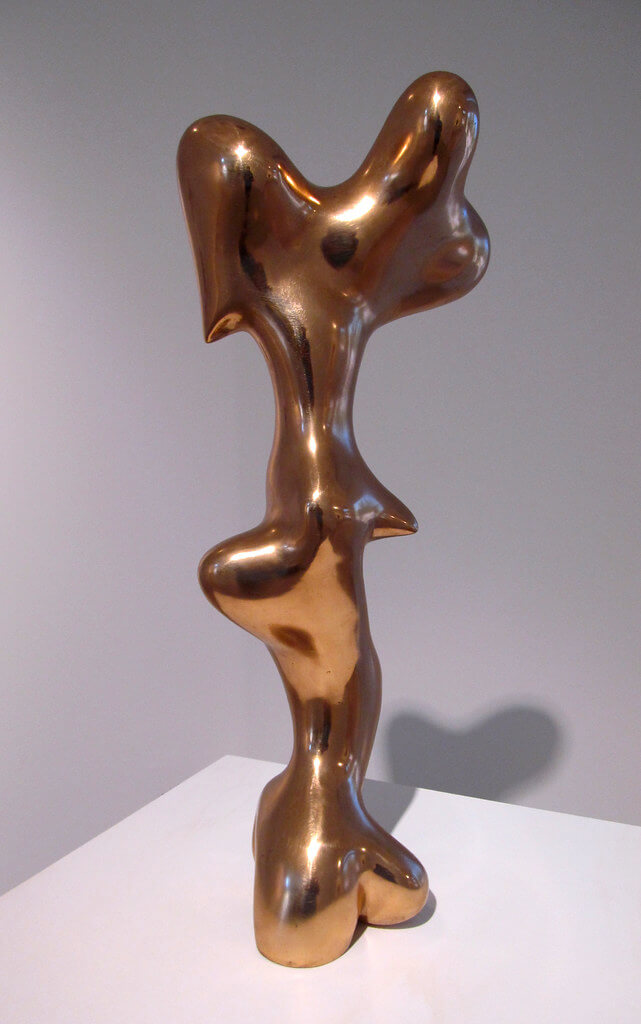
“Growth” by Jean Arp is a sculpture that captures the essence of organic growth and spontaneous creativity. The work exudes a natural, almost effortless harmony as abstract forms come together in a fluid whole. Arp utilizes round, soft shapes reminiscent of organic elements such as seeds, leaves, and cells. The sculpture seems to evolve, reflecting a lively process of growth and transformation.
13. Salvador Dali: A Young Woman in a Landscape
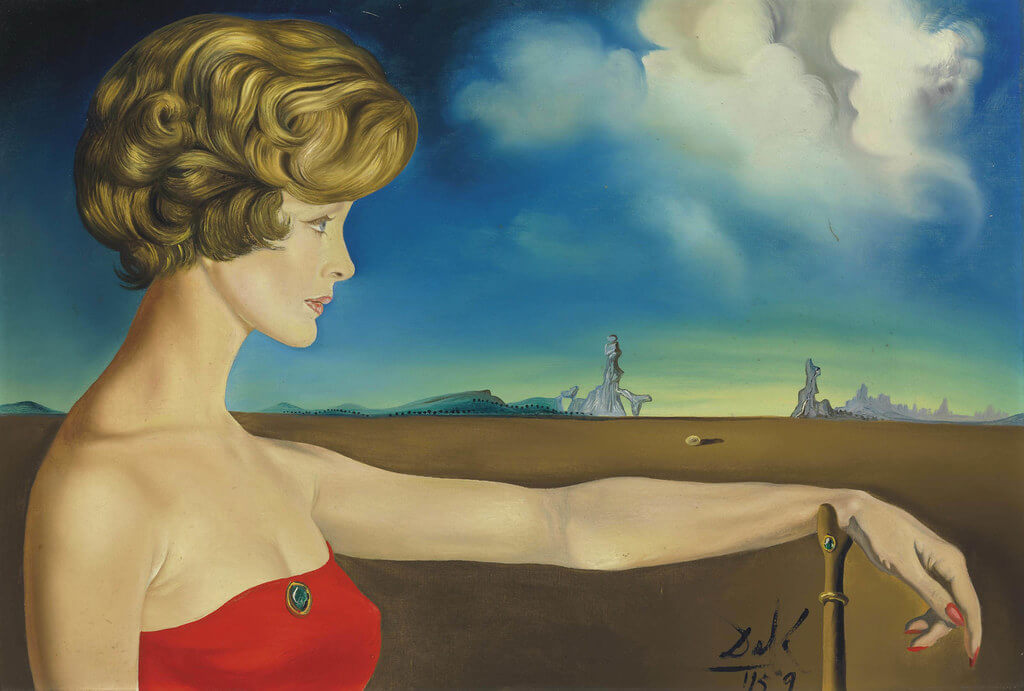
In this 1959 painting, Dali focused on the contrast between a barren and dubious landscape with a woman from society in the foreground. This is what makes this painting so interesting, as the contrast between the two is characteristic of surrealism. The bright colors and realistic approach to characters are elements that consistently appear in Salvador Dali’s paintings.
14. Remedios Varo, Papilla Estelar 1958
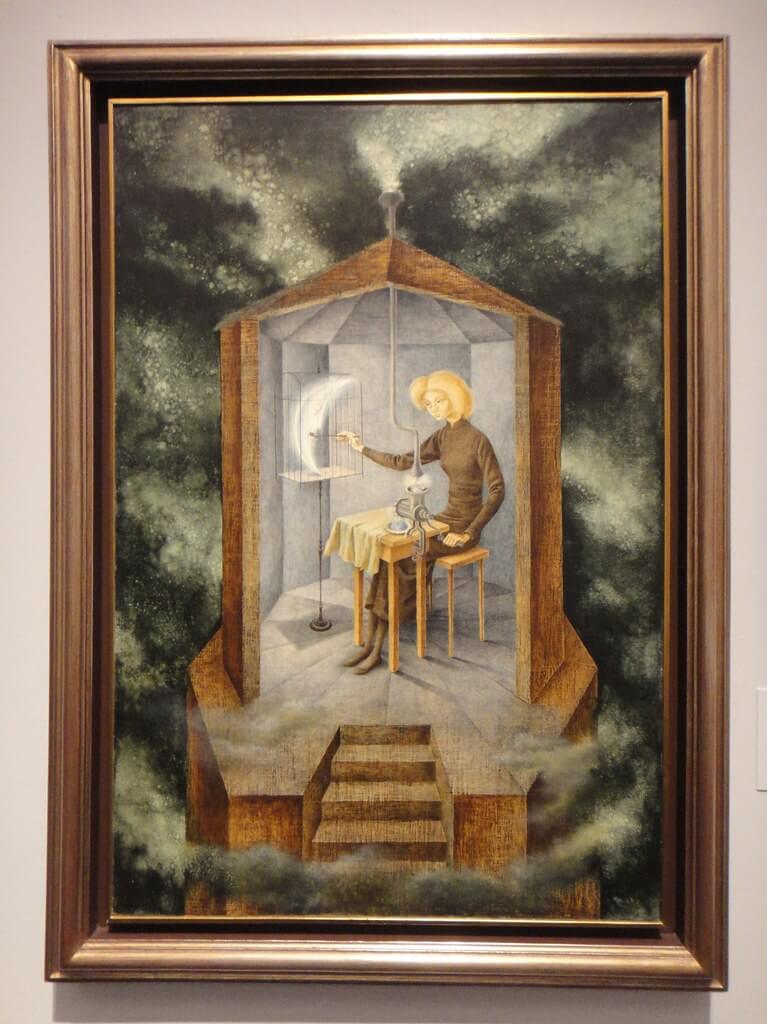
‘Papilla Estelar‘, translated as ‘Starmaker,’ is quintessentially surrealistic. The painting also conveys a sense of isolation and loneliness, which is not surprising. Varo fled to Mexico during World War II before creating this work, where European influence on art was not immediately welcome.
The darkness surrounding the cabin, brought inside and fed to the moon, symbolizes hope and the possibility of new opportunities.

